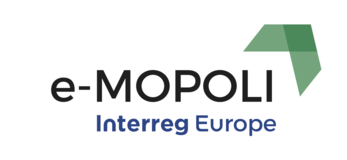e-MOPOLI: Will Slovenia achieve truly sustainable mobility?
Slovenia, which adopted its national transport strategy already in 2015, and the latter included sustainable mobility aspects, will devote 17 billion EUR to development in a given area by 2030, stated Matjaž Vrčko of the Directorate for Transport Policy and International Affairs at the Ministry of Infrastructure on the e-MOPOLI event organized by BSC Kranj in Bled on Wednesday,12.6.2019. Sustainable transport strategy is high on the priority list also for BSC Kranj, Regional development agency of Gorenjska, said in the welcome speech project manager at BSC Kranj Blanka Odlazek.
"In transport we will only see growth up to 8% in the next years, both in transit and in personal mobility" , said Matjaž Vrčko, "so we need to think about sustainable solutions". In his words, 17 billion EUR will be earmarked for the development of infrastructure and sustainable transport measures by 2030. In the area of sustainable mobility, however, is in the first place, by Vrčko's opinion, encouraging the use of public transport, including rail transport, followed by the introduction of fast bus services between cities and the expansion of cycling routes. "But this government is very motivated to promote 'green traffic'. In doing so, it is also essential to have a stable financing".
How to achieve emission reductions with rising traffic?
However, as Matjaž Vrčko further stated, Slovenia is nevertheless challenged to encourage people from rural areas to use public transport, as there is a considerable dispersal of population in the country and consequently the inhabitants cannot use public transportation as it is cost inefficient to have it. How can we then, in the face of increasing personal traffic, achieve the goal of reducing greenhouse gas emissions? According to Vrčko, this is practically impossible to do until 2030, despite concrete incentives, such as financial support for the purchase of hybrid and electric vehicles, or the provision of free charging of e-vehicles. To reach the set objectives Slovenia would need around 17% electric or plug in hybrid vehicles, this means 200,000,00 vehicles. We have a fleet of 1.1M cars and the majority of people do not buy cars for 35.000 EUR but for 6.000 EUR. The objective for 2020 was to have 20,000.00 BEV or plug in hybrid vehicles. According to Vrčko we have in 2019 7000 of all types of vehicles on alternative fuel, 1,300.00 private personal BEV vehicles and 4,600.00 plugin hybrid vehicles.
The strategy on alternative fuels was adopted in 2017 mainly based on how to reach environmental objectives. A week previous to this event, government adopted Action plan for alternative fuels. There are actions missing for LNG and at this moment the only effective fuel for fright traffic on land and water and big boats is LNG.
Vrčko stated that the government is contemplating if it is wise to keep positive incentives or would the negative bring better results? It is calculated that if cars with the motor of the standard EURO 1, 2 and 3 are removed from the traffic the effect on air pollution would be better than if 20.000 BEV and plug in hybrids vehicles are replacing the existing dominating fleet. However, it is politically incorrect to increase tax up to 1000 EUR per year for these 3 standards. The good point is that the industry has to do something to reduce the CO2 emissions as well.


![[NEWS] Brescia: E-bike sharing in Brescia](/fileadmin/user_upload/tx_tevnewsevents/news/image_1664960602.jpg)
![[NEWS] Rogaland: battery-only high speed craft](/fileadmin/user_upload/tx_tevnewsevents/news/image_1664804367.png)
![[NEWS] BSC: promoting e-mobility in Gorenjska](/fileadmin/user_upload/tx_tevnewsevents/news/image_1660136312.png)
![[NEWS] BSC: new opportunities for cooperation](/fileadmin/user_upload/tx_tevnewsevents/news/image_1660136159.jpg)
![[NEWS] Rogaland: Solar power for electric airplanes](/fileadmin/user_upload/tx_tevnewsevents/news/image_1660135530.jpg)
![[NEWS] Bucharest: decarbonization of transports](/fileadmin/user_upload/tx_tevnewsevents/news/image_1656521459.jpg)
![[NEWS] Calabria: CENTRE FOR SUSTAINABLE MOBILITY](/fileadmin/user_upload/tx_tevnewsevents/news/image_1655983407.png)
![[NEWS] BSC: rental system network for bikes](/fileadmin/user_upload/tx_tevnewsevents/news/image_1655967495.png)
![[NEWS] Attica: Electromobility in Paiania](/fileadmin/user_upload/tx_tevnewsevents/news/image_1655110894.png)
![[NEWS] Attica: First e-bike festival in Athens](/fileadmin/user_upload/tx_tevnewsevents/news/image_1655110292.png)